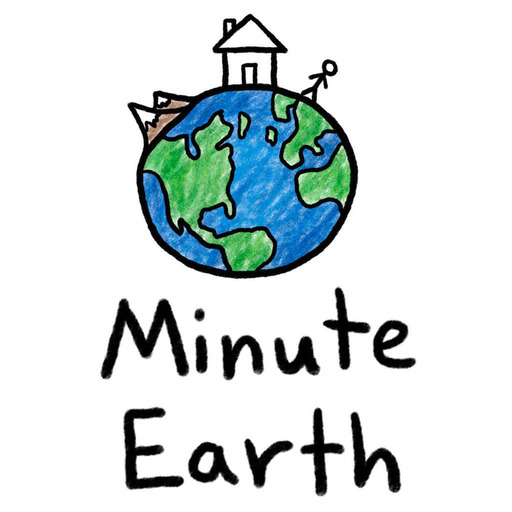Thanks to my grandmother for inspiring this story, and to my mother for helping make it. If you like our videos, please consider supporting MinuteEarth on Patreon! - Alex Bird poop was the gateway fertilizer that turned humanity onto the imported-chemical-based farming system of modern agriculture. Thanks to our Patreon patrons https://www.patreon.com/MinuteEarth and our YouTube members. ___________________________________________ To learn more, start your googling with these keywords: Guano: seabird (or bat) poop. From the indigenous Peruvian word “wanu”, meaning “manure that’s good for fertilizer" Manure: animal poop used as fertilizer (typically cow or pig poop) Fertilizer: a chemical-containing substance added to soil to provide nutrients to plants Nitrate mining: digging up the naturally occurring solid form of the element nitrogen (sodium nitrate) Phosphate mining: digging up the naturally occurring solid form of the element phosphorus Haber-Bosch process: the major industrial method to take nitrogen gas out of the air and convert it to ammonia ___________________________________________ If you liked this week’s video, you might also like: Our fertilizer is killing us. Here's a fix: https://grist.org/article/billionaires-and-bacteria-are-racing-to-save-us-from-death-by-fertilizer/ Why bird poop is white: https://www.audubon.org/news/what-makes-bird-poop-white In 1856 US Congress enabled US citizens to take over unclaimed islands with guano on them: http://americanhistory.si.edu/norie-atlas/guano-islands-act Guano is in demand again today: https://www.nytimes.com/2008/05/30/world/americas/30peru.html _________________________________________ Subscribe to MinuteEarth on YouTube: http://goo.gl/EpIDGd Support us on Patreon: https://goo.gl/ZVgLQZ And visit our website: https://www.minuteearth.com/ Say hello on Facebook: http://goo.gl/FpAvo6 And Twitter: http://goo.gl/Y1aWVC And download our videos on itunes: https://goo.gl/sfwS6n ___________________________________________ Credits (and Twitter handles): Script Writer, Video Director, and Narrator: Alex Reich (@alexhreich) Video Illustrator: Jesse Agar (@JesseAgarYT) With Contributions From: Henry Reich, Ever Salazar, Peter Reich, David Goldenberg Music by: Nathaniel Schroeder: http://www.soundcloud.com/drschroeder Image Credits: Farquhar, W.H. 1884. The Annals of Sandy Spring, Vol. I, Pg. xxix-xxx. Baltimore: Cushings & Bailey. http://bit.ly/2QOWGKr ___________________________________________ References: Canby, T.Y. 2002. The Annals of Sandy Spring, Vol. VI. Introduction: Pg. 26-27. Sandy Spring Museum. Cushman, G.T. 2013. Guano and the opening of the Pacific World: A global ecological history. Cambridge University Press. Cushman, G.T., personal communication, October 2018. Farquhar, W.H. 1884. The Annals of Sandy Spring, Vol. I, Pg. xxix-xxx. Baltimore: Cushings & Bailey. http://bit.ly/2QOWGKr Lorimor, J., Powers, W., Sutton, A. 2004. Manure Characteristics. MWPS-18, Section 1. Second Edition. Table 6. Iowa State University, Ames, Iowa. http://msue.anr.msu.edu/uploads/files/ManureCharacteristicsMWPS-18_1.pdf Robinson, M.B. April 26, 2007. In Once-Rural Montgomery, a Rich History. The Washington Post. http://www.washingtonpost.com/wp-dyn/content/article/2007/04/25/AR2007042501342.html S. Sands & Son. 1875. The American Farmer: Devoted to Agriculture, Horticulture and Rural Life. Vol. 4, Issue 12, pg. 417-418. Baltimore. https://play.google.com/books/reader?id=ul1TAAAAYAAJ&hl=en&pg=GBS.PA417 Stabler, H.O. 1950. The Annals of Sandy Spring, Vol. V, Pg. 43. American Publishing Company. Szpak, P., et al. 2012. Stable isotope biogeochemistry of seabird guano fertilization: results from growth chamber studies with Maize (Zea mays). PloS one, 7(3), e33741. https://journals.plos.org/plosone/article?id=10.1371/journal.pone.0033741 Thanks also to the Sandy Spring Museum.
Publié le par Neptune Studios
Les podcasts externes de ce site sont récupérés à partir de liens publics (Feed XML/RSS) qui nous ont été fournis par nos utilisateurs ainsi que des partenaires. Ce podcast m'appartient.


 Education
Education